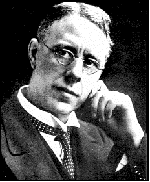When was Stainless Steel Invented?
The discovery of stainless steel is still a hotly debated topic among those who are familiar with its origin and history. The short answer is that it came into being in the early 20th century, and scientists in a number of different geographies seem to have made similar discoveries at overlapping times.
What is stainless steel?
Stainless steel is an alloy – a mixture of multiple metals – consisting of steel and at least 11% chromium. Steel is itself a product of iron and carbon and has been part of civilization for almost 4,000 years. The stainless variety came into being as metallurgists were experimenting with alloys to solve the issues of corrosion and oxidization.
In the 1820’s it was discovered that iron-chromium alloys displayed resistance to acid, but scientists were unable to take the research to the extremes due to technological limitations. For the alloys to be most resistant to corrosion the chromium used in manufacturing needs to have low carbon content. The technology enabling the production of such chromium was invented in 1895 when German scientist Hans Goldschmidt developed the aluminothermic reduction process.
That advancement set off an arms-race of sorts with researchers all over the world as they sought to create the most durable steel alloy.
 The winner of the race is generally considered to be Harry Brearley of England, who was working for an arms manufacturer between 1908 and 1913. Legend has it that a discarded sample didn’t show signs of rusting while others did, and Brearley rescued it from the trash to conduct more tests. Most historians believe this is a mythical re-telling and the truth more closely resembles a standard scientific development process.
The winner of the race is generally considered to be Harry Brearley of England, who was working for an arms manufacturer between 1908 and 1913. Legend has it that a discarded sample didn’t show signs of rusting while others did, and Brearley rescued it from the trash to conduct more tests. Most historians believe this is a mythical re-telling and the truth more closely resembles a standard scientific development process.
However it happened, Brearley recognized at least one major application for his “rustless steel” – the cutlery industry. He partnered with an old friend Ernest Stuart who convinced him to rename the product “stainless steel” and the name stuck. It is worth noting that there are nearly a half-dozen invention claims from various scientists dating between 1908-1913 and all have some merit to their case. The invention of stainless steel seems to have been an inevitability of the age, and the real winner is not a single inventor, but humanity as a whole.
Transformational change
Harry Brearley could hardly have predicted the seismic change his discovery would produce. We’ll quote from a PBS special on Streamliners here:
“Stainless steel, with its sleek, shiny surface and tremendous strength, is a marvel of technology. It has revolutionized most modern industries, including food, medicine, and transportation. The non-corrosive and rust-resistant properties of stainless steel have made it essential in the preparation, delivery, and storage of food. It’s a standard in restaurant kitchens since it can be easily cleaned and dried. The surface resists oxidization at high temperatures making the sterilization of medical equipment possible.”
Its strength also led to a revolution in transportation design, the aesthetic appeal of which began to influence interior design as early as the 1950’s. It is because of this shift of aesthetics (along with the aforementioned practical value) that stainless steel appliances are now a common sight in residential kitchens as well as commercial ones.
This single discovery, while unheralded, has paved the way for many modern technologies and impacts most people’s lives every single day.






